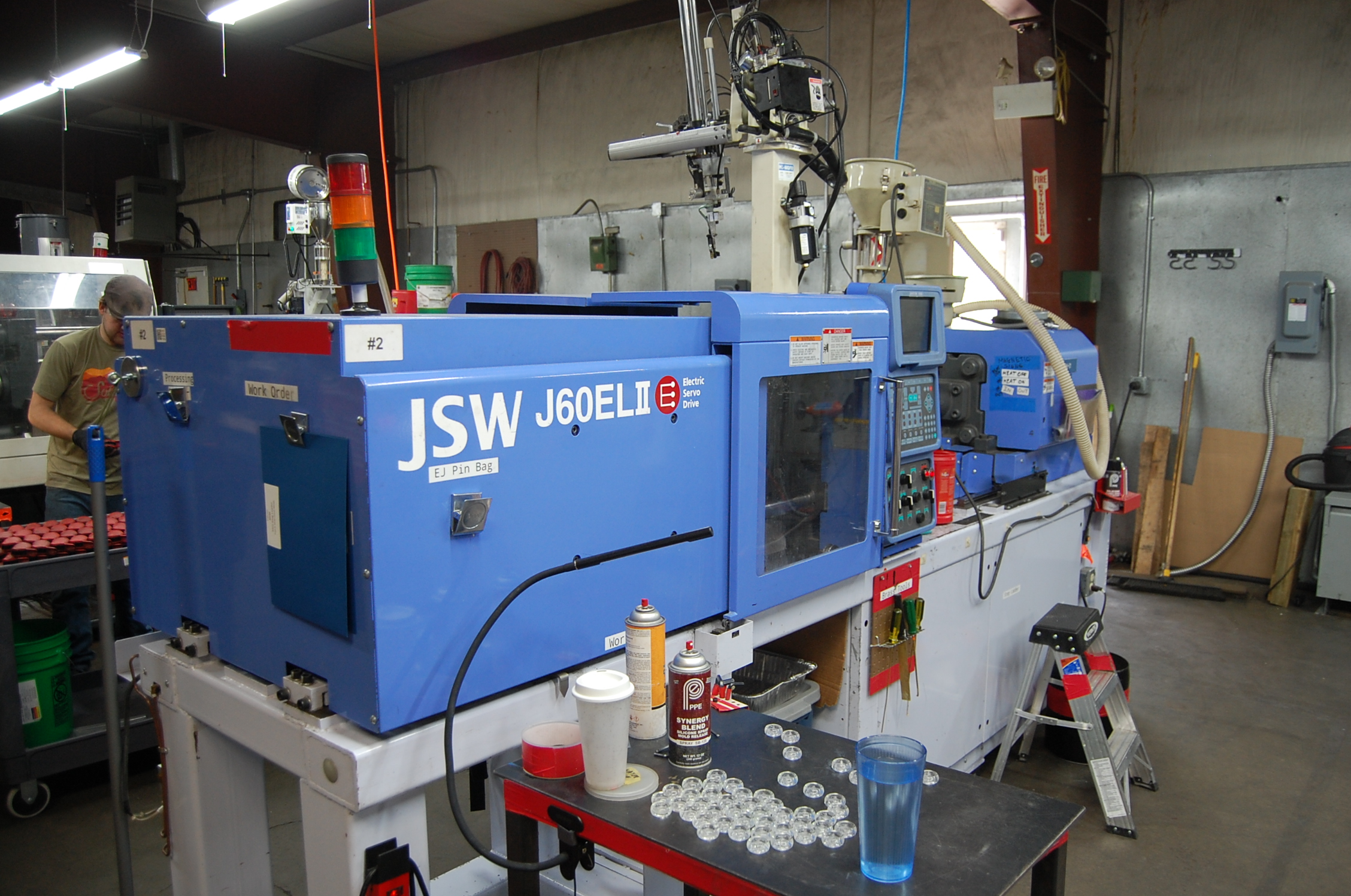Plastic Injection Molding
Plastic injection molding is a process for creating almost any kind of plastic product suitable for use in any industry. It is a versatile way to produce high quality, high-volume products at a low cost per part. In the process of plastic injection molding, molten plastic is injected into a custom metal mold, compressed to high pressure to solidify and ejected for continuous production.
How does it work?
The typical layout of a plastic injection molding machine consists of a hopper, which is a chamber in which the plastic pellets, or granules, are placed in preparation for heating. The next vital component is the heating chamber, where the pellets are melted down. In its molten state, other substances such as dyes or other chemical agents can be added in order to change the final product’s color and texture. The injection mold consists of two hollow cavities which clamp together under pressure. The cavities are injected with the molten plastic, are joined together, and left for a short amount of time to cool and solidify. Once solid, the two halves of the mold are separated, and the plastic product is ejected out of the mold by a set of ejector rods or pins.
Another type of injection molding service we offer is known as overmolding which is a two step process that can produce more complex and unique parts. In this process, a substrate piece is created via standard plastic injection molding and then a second mold is used to bond an additional layer of plastic over the substrate piece. Often times this is done to add a second color to a part or add an ergonomic grip over a bare plastic piece.
Common applications of Injection Molding
Injection molding can be used to produce plastic parts of varying complexity and for a wide variety of applications. A few of these include:
Automotive parts such as air vents, radio knobs, gear shift handles
Medical equipment such as orthodontia mold forms, wheelchair handles, syringes
Consumer goods such as firearms accessories, guitar picks, kitchen wares
Benefits of Injection Molding
Speed. Plastic injection molding is popular for long manufacturing runs because of its speed. In addition to how fast the molding process is itself, the final product often times is finished as soon as it leaves the mold, and does not need to undergo any additional processes such as surface finishing.
Low labor costs. Most injection molding machines feature automated mechanisms that keep production going at a steady rate
Accuracy. The injection molding process involves filling a mold that is cut with the utmost precision. The structure of the molds as well as the pressure applied in the process ensure that there is very little variation in the product’s configuration from copy to copy.
Strength. In applications that require their plastic components to be exceptionally strong, plastic molding has strengthening capabilities that other processes do not.
Complexity capabilities and versatility.
Minimal waste. The process of injection molding is highly energy-efficient. The small amount of plastic waste that the process may produce can be recycled and reused.
View our materials guide or request a quote for further information on the different materials we have available for injection molding!
Materials Guide
Choose from a wide variety of different thermoplastic materials


